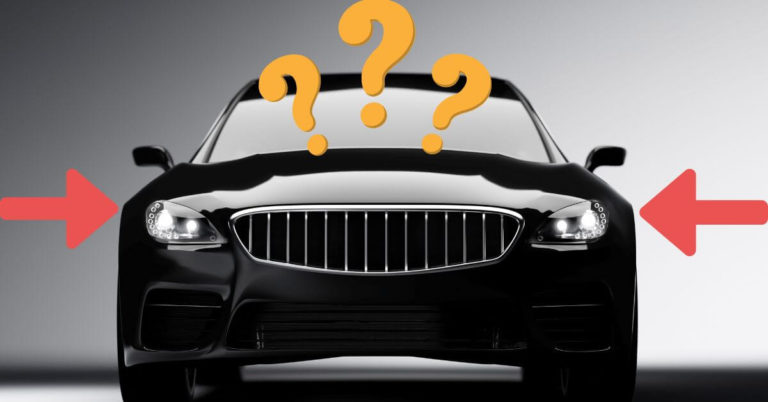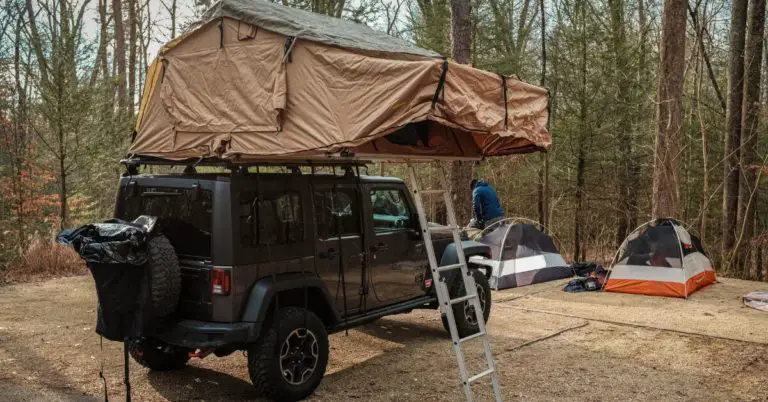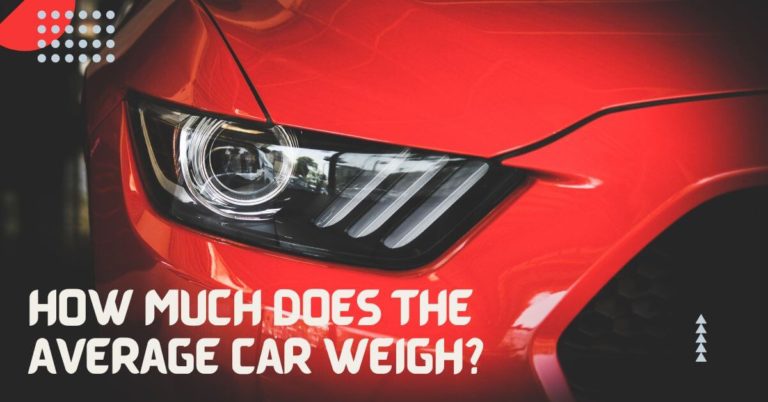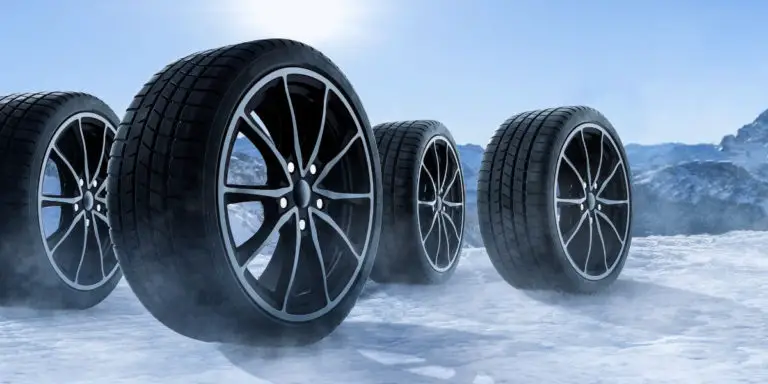How To Buy Quiet All Season Tires (7 Steps)
Sick of the thunderous roar from your tires dominating the cabin and ruining your driving experience?
The good news is there are plenty of options for quiet all season tires engineered to give you a peaceful, fatigue-free ride.
Excessive tire noise from the tread pattern and vibrations often drowns out your music and causes driver fatigue.
But you can transform your drive by understanding what causes the racket and choosing tires designed to minimize it.
Several key factors contribute to the sounds that are destroying your road trip zen:
- Tread design – Larger blocks and aggressive patterns create more noise
- Tire materials – Stiffer rubber compounds transmit more noise.
- Tire inflation – Under or over-inflation increases noise
- Wheel alignment – Improper alignment causes uneven wear and noise
The good news is there are many excellent, quiet all season tires available that can provide a smoothed-out, silent driving experience:
- Grand touring tires – Optimized for hushed highway cruising
- Standard all-seasons – Balance capability and moderate noise
- Highway terrain tires – Rugged yet quiet over dirt and pavement
In this guide, we’ll cover everything you need to know about choosing the right tires to minimize noise for a peaceful, smile-inducing ride each trip.
It’s time to declare your freedom from tire roar!
Table of Contents
Tread Design – The Noisemaker
The tread design is one of the biggest contributors to tire noise. Those distinctive grooves and blocks that help channel water away and provide grip create most of the sound.
Here’s the deal – as the tread blocks hit the pavement, they make tiny impacts that vibrate and pass sound into the tire structure.
Larger blocks and more aggressive patterns equal more noise. It’s just physics!
Now, some smart tire engineers have figured out ways to minimize the roar through optimization. By tuning the blocks’ and grooves’ size, shape, and orientation, they can disrupt sound waves and reduce resonance.

Grand touring tires tend to have smoother, more refined tread patterns to cut down on noise.
But most all-season and all-terrain tires need those larger blocks for traction and off-road grip, so there’s a tradeoff.
Tread depth plays a role, too. As your tires wear down over time, the grooves get shallower. Less tread depth can mean slightly less noise, but the tread also becomes uneven, which increases noise again.
It’s tricky!
Tire Materials – What They’re Made Of Matters
The specific rubber compounds used in tires also impact the noise you hear. Rubber is quite a high-tech material!
Engineers tweak the ingredients and formulas to achieve different performance characteristics. Some focus on boosting grip and traction, while others aim to improve comfort and quietness.
For example, a soft, pliable rubber compound can help absorb vibrations rather than transmitting them to your cabin as noise.
But they may sacrifice ultimate handling precision in the process. It’s about striking the right balance.
Modern acoustic foam insulation applied to the inside of tires is another innovative material that helps to dampen noise. They’re like sound-deadening sponges inside your tires!
Tire Size – Bigger Isn’t Always Better
When it comes to tire noise, size matters. The contact patch – the area where your tires meet the road – has a direct impact.
Larger diameter rims and lower-profile tires typical on sports cars and performance SUVs put more rubber in contact with the pavement.
More contact equals more potential for noise-inducing friction and vibration.
That’s why most quiet, comfort-oriented vehicles opt for moderately-sized tires – enough to absorb bumps and imperfections comfortably but not oversized. Bigger is only sometimes better for a peaceful, quiet ride.
There are also improvements in sound-absorbing liners and foams applied within the tire structure and wheel that help dampen resonances from the bigger contact patch of plus-sized tires.
Tire Pressure – Keep It Just Right
Here’s an easy thing to control to reduce tire noise – inflation pressure!
Underinflated tires have more rubber touching the road, creating more flex and friction that gets transmitted as annoying noise. They wear unevenly, too, also boosting noise.
Conversely, overinflated tires must have full and proper contact with the pavement. They end up transmitting more impact vibrations rather than dampening them effectively.
The solution is obvious – keep your pressures to the vehicle’s recommended specs for optimum quietness and performance.
It takes just a few minutes a month to use a gauge and top them off or bleed some air as needed.
Wheel Alignment – Keep It Straight
The ride and handling get wonky if your wheels need to be correctly aligned.
But alignment also affects tire noise in a big way.
When wheels are out of alignment, the tread doesn’t meet the road evenly. Sections will wear faster than others, creating an uneven profile.
As they roll, these high and low spots on your tires generate more noise-inducing vibrations. It’s like driving with warped brakes – bad vibrations!
Most mechanics recommend getting your alignment checked at least annually. It’s quick and inexpensive peace of mind to keep your tires humming quietly and wearing evenly for their entire life span.
Road Surfaces – Avoid the Bumpy Ones!
The type of roads you’re driving on significantly contributes to tire noise. It just comes with the territory.
Perfectly smooth, newly paved asphalt is ideal. There’s minimal vibration, so your tires glide quietly. Life doesn’t get much better!

But let’s be realistic – most of us drive on older, worn, and bumpy bitumen daily. Minor cracks and rough patches create mini-impacts that pass sound through your tires.
And it only gets worse. Heavily textured or grooved concrete roads are extra noisy, as are rumble strips and the botts’ dots they use on highways. It’s like driving over Braille!
Potholes, bumps, and uneven surfaces also force your suspension to work harder to isolate the disturbance. No matter how advanced your shocks, noise still gets through.
Speed – Faster Means Louder
This is no surprise, but the faster you drive, the louder your tires get. It’s just physics and aerodynamics in action.
At normal around-town speeds, tire noise is minimal – it mostly gets drowned out by other sounds. But get out on the open highway, and it becomes very noticeable.
As you accelerate to highway speeds, wind resistance and tire rotation speeds increase. More speed equals more noise-inducing friction and vibrations.
Tires optimized for comfort focus on tuning the tread profile and minimizing resonant frequencies, typically in that 55-75 MPH highway cruising range where noise is most apparent.
But some roar is unavoidable at 80+ MPH unless you’re driving a new Mercedes S-Class or something high-end. Just turn up the music and enjoy the drive!
Seasonal Temps – Cold Weather Gets Noisy
Here’s an interesting fact – your tires get noisier in colder weather compared to warm.
The rubber gets a bit harder and transmits more sound.
Winter and all-season tires also use a different rubber formulation called a silica compound for flexibility in freezing temps. But that also boosts noise a bit.

Once temperatures drop to near freezing, the compound transitions into a harder state. Impacts get transmitted directly rather than dampened and absorbed.
Discover more winter car preparation tips by checking out this blog.
And remember, underinflation is more common with seasonal temperature swings, too. That combo of lower pressure and harder winter rubber means more noise on the road.
This is just another reason to keep your pressures dialed in!
When it comes to quiet tires, you’ve got options! Let’s break down the key types of all-season tires engineered to give you a peaceful, smooth, and noise-free ride.
Quiet All Season Tires Breakdown
Grand Touring Tires – The Refined Choice
Grand touring tires are designed to deliver a supremely quiet and comfortable highway driving experience.
They’re ideal for luxury sedans and discerning drivers.
Key features:
- Silky smooth and quiet tread patterns
- Focus on comfort over sporty handling
- Premium ride quality and low noise across all speeds
- Responsive handling and high-speed stability
Ideal for:
- Luxury cars and sedans
- Highway cruising and long road trips
- Mature drivers seeking comfort and refinement
Reviews and ratings: Grand touring tires consistently earn high marks for hushed cruising. For example, the Michelin Primacy Tour A/S gets 5/5 for quietness from TireRack reviewers.
Top brands: Michelin, Continental, Pirelli, Goodyear
If you drive a Lexus LS or Mercedes S-Class, these tires match your expected refined experience.
All-Season Tires – The Mainstream Balancers
For most everyday drivers, a quality set of standard all-season tires gets the job done. They balance good year-round capability with lighter duty and moderate noise levels.
Key features:
- Stable, predictable handling in all conditions
- Decent tread life at a moderate price point
- Reduced noise for highway cruising and around town
- Available at your local tire shop
Ideal for:
- Family sedans, crossovers, light trucks
- Year-round use without swapping summer/winter tires
- Tight budgets or leased vehicle maintenance
Reviews and ratings: Brands like Bridgestone, Michelin, and Goodyear earn positive feedback for reasonably quiet all-season tires at an affordable price.
Top brands: General, Bridgestone, Michelin, Firestone, Goodyear
You can’t go wrong with a respected name for all-seasons for your Camry or Explorer. Don’t expect them to be as refined as premium grand touring tires.
Highway Terrain Tires – Rugged Yet Quiet
If you need more off-road capability but value a quiet ride, highway terrain tires are the way to go.
Major brands have tuned these to minimize road noise while confidently tackling dirt, gravel, and rain.
Key features:
- On/off-road versatility with reinforced sidewalls
- Reduced noise for highway cruising and commuting
- Responsive handling on the pavement with terrain-gripping tread blocks
- Available for CUVs, SUVs, and light trucks
Ideal for:
- Light-duty off-roading and rural driving
- All-weather capability in rain or dirt
- Towing RVs, boats, or trailers occasionally
Reviews and ratings: The Falken WildPeak A/T3W impresses reviewers with its quiet highway manners, given its aggressive tread pattern.
Top brands: Toyo, Falken, BFGoodrich, General Grabber, Goodyear Wrangler
When you need some gravel-road grip but a peaceful highway ride, these are an outstanding balance.
Low-Rolling Resistance Tires – Ultra Fuel-Efficient & Quiet
Low-rolling resistance tires don’t get much love, but they deserve attention for their squeaky-clean, quiet operation. If you want max MPG and minimum noise, these deliver.
Key features:
- Special tread compound reduces friction on pavement
- Boosts fuel economy ratings by 5-10%
- Low noise at all speeds due to reduced tread squirm and flex
- The focus is fuel efficiency over sporty handling
Ideal for:
- Hybrid, electric, and eco-minded vehicles
- Extended highway commutes and road trips
- Rideshare drivers and delivery fleets
Reviews and ratings: Low rolling resistance tires rate well for quiet cruising; don’t expect sports car responsiveness.
Top brands: Michelin, Bridgestone, Goodyear, Continental, Pirelli
These eco-minded tires check all the boxes when ultimate efficiency and low noise are priorities. Just beware of a slightly slower handling response.
Ultra-High Performance Tires – Quiet Speed & Precision
Typically, race-bred ultra-high-performance tires are noisy, but new designs aim to give you track precision with luxury refinement.
Key features:
- Maximized dry and wet grip with precise handling
- Improved high-speed comfort and noise reduction
- It is ideal for performance sedans and drivers seeking thrills without noise
Ideal for
- Sports cars, performance sedans, premium SUVs
- Winding backroads and enthusiast driving
- Luxury vehicle owners wanting refinement with capability
Reviews and ratings: The Michelin Pilot Sport A/S 3+ earns high marks for grip and handling with tolerable noise levels for performance rubber.
Top brands: Michelin, Continental, Pirelli, Goodyear, Yokohama, Bridgestone
You can handle responsive and reasonably quiet cruising with the latest UHP tires. Technology is amazing these days!
Alright, we’ve covered the factors causing noise and the main tire types available.
Now, how do you pick the perfect quiet tires for your ride?
Choosing new rubber can be confusing, but follow this handy guide, and you’ll be cruising in peace in no time.
Quiet All-Season Tires (Buyer’s 7 Steps)
Step 1: Define Your Needs
Before hitting the tire shop, think about how and where you primarily drive.
- What’s your typical daily commute like? Lots of highways or mostly around-town errands?
- Do you take frequent long road trips or need rubber for serious off-road adventures?
- Do you routinely haul heavy loads, pull trailers, or drive aggressively?
Be realistic about your actual usage. There’s no sense in buying mud terrain tires if you never leave the pavement.
And consider your priorities – is comfort, longevity, fuel economy, or performance grip at the top of your list? There are no right or wrong answers.
Just be honest with yourself.
Step 2: Research Options Extensively
Now that you know your needs, research the many tire options.
Rating sites like TireRack and Consumer Reports offer insight into real-world noise levels, performance, tread life, and value across different tires.
Browse their exhaustive tests comparing noise ratings in decibels across tire models at various speeds. See which earns top marks for low-frequency road noise and quiet, vibration-free operation.
Check what other owners say in user reviews. Note any consensus around particularly quiet tires for your vehicle type and conditions.
Don’t rely on marketing claims alone. Look for hard, objective data from experts and other drivers for true noise comparisons.
Step 3: Consider Your Conditions
Keep your specific driving environment and weather in mind when researching options.
For example, fidelity on smooth Midwest highways differs greatly from old concrete roads in the Northeast plagued by potholes.
Likewise, sloppy winter performance in Vermont varies drastically from mild Portland drizzle. Make sure the tires match where and how you drive.
And factor in tire outlet availability in your area if you need a replacement under warranty. Do your homework!
Step 4: Look at Top Brands
With so many brands out there, it helps to focus on industry leaders renowned for their research, testing, and engineering.
Look for the big names like Michelin, Bridgestone, Continental, Goodyear, Pirelli, and Yokohama.
Stick to trusted manufacturers with decades of perfecting the balance of comfort, longevity, performance, and value.
You’ll pay more but get proven technology and expertise designed to deliver a quiet, premium driving experience.
Step 5: Read Owner Reviews
Don’t just take the company’s word that a tire is quiet – listen to customers who’ve driven on them!
Look for reviews and forum posts from your specific make and model drivers. See what real owners say about noise levels, ride quality, and overall satisfaction.
Give extra credence to tire expert sites like TireRack that verify purchasers through registration and sales records. Beware of anonymous reviews that could be biased or fake.
Step 6: Talk to the Experts
With so many model and size choices, it helps to discuss your needs with an experienced tire shop.
Let them know the types of driving you do, typical mileage, priorities around performance, comfort and longevity, and budget.
A trustworthy pro can recommend ideal tires for your vehicle and usage based on experience installing thousands of sets over the years.
They stay on top of the latest offerings and can steer you towards proven quiet options that match your needs and budget.
Step 7: Follow Best Practices
You did your homework and got a new quiet rubber – don’t undo it with neglect!
Ensure tires are properly inflated, rotated at 5k intervals, and aligned. Inspect them routinely for damage and wear.
Avoid potholes, curbs, and objects that can impact wheels and require repairs. Keep your new investment humming smoothly for the long run.
By following this roadmap, you’ll end up with tires purpose-built to give you a peaceful, smile-inducing driving experience mile after mile. Don’t get mesmerized enjoying the silence, and let go of the wheel!
Below are answers to some frequently asked questions we get about quiet tires.
FAQ (quiet all season tires)
How are tire noise ratings measured?
Tire noise is tested using controlled laboratory equipment and real-world track testing.
In lab tests, tires are mounted on machines that simulate operation and measure sound levels in decibels. Microphones surround the test area to capture noise from all angles.
Track testing involves driving instrumented test vehicles at various speeds to record noise audible in the cabin. Instruments measure vibration and sound pressure.
The lab and track results are combined to give an overall objective tire noise rating for each model tested. Lower decibels equal a quieter tire.
Do noisier tires negatively impact fuel efficiency?
Yes, tires that generate more noise also tend to have higher rolling resistance, which reduces fuel mileage.
As the tread pattern flexes and distorts during rotations, it produces sound. This flexing also requires more energy, reducing efficiency.
So, noisier tires with more tread squirm will see measurably lower MPG than tires specially designed for low rolling resistance and quiet operation.
How often should I rotate my tires for a quiet ride?
Tire experts recommend rotating your tires every 5,000-8,000 miles to ensure even treadwear and sustained quiet performance.
Rotating evens out the wear across your tires so you don’t end up with some bald spots and other sections with full depth.
Uneven wear creates noise-inducing vibrations and impacts. Keeping the tread depth consistent via timely rotations maintains a quiet ride.
What tire tread depth indicates a need for replacement?
Most manufacturers recommend replacing tires when the tread depth reaches 2/32 inches or less.
The shallower tread lacks the channel depth to evacuate water, reducing wet weather grip effectively.
It also allows more road noise into the cabin as the thinner buffer of remaining rubber transmits more sound and vibration.
Replacement at 2/32 inches ensures you benefit from the tire’s engineered noise reduction and wet handling capability.
How do I properly break-in new tires to minimize noise?
The break-in period is critical for maximizing new tire noise reduction and performance. Here are some tips:
Take it easy the first 60-100 miles, avoiding hard braking or cornering, which can damage the tread surface.
Maintain proper inflation pressure – don’t over or under-inflate when new.
Accelerate, corner, and brake gently, allowing the tires to wear in smoothly.
Avoid long high-speed highway runs initially that create excess heat and friction.
After 100 miles, drive normally and enjoy the peace and quiet!
Conclusion
There you have it – everything you need to know about finding the quietest tires for your ride!
We covered the key factors causing tire noise, different tire types available, choosing the right one for your needs, and proper maintenance.
The bottom line is that the right tires can make a huge difference in minimizing cabin noise for a peaceful, fatigue-free driving experience.
Now that you’re an expert on quiet tires, it’s time to take action:
- Evaluate your priorities – do you want ultimate comfort or sportier handling?
- Research tire noise ratings, brands, and reviews to find your best match
- Consult experts at a reputable tire shop for personalized recommendations
- Invest in a quality set of tires purpose-built for noise reduction
- Maintain them properly with rotations, alignment, and inflation checks
With your newfound knowledge, you can shop confidently, get the ideal tires for your needs, and look forward to miles of relaxation on the road ahead.
For more automotive tips and tricks, check my Auto Insight section.







